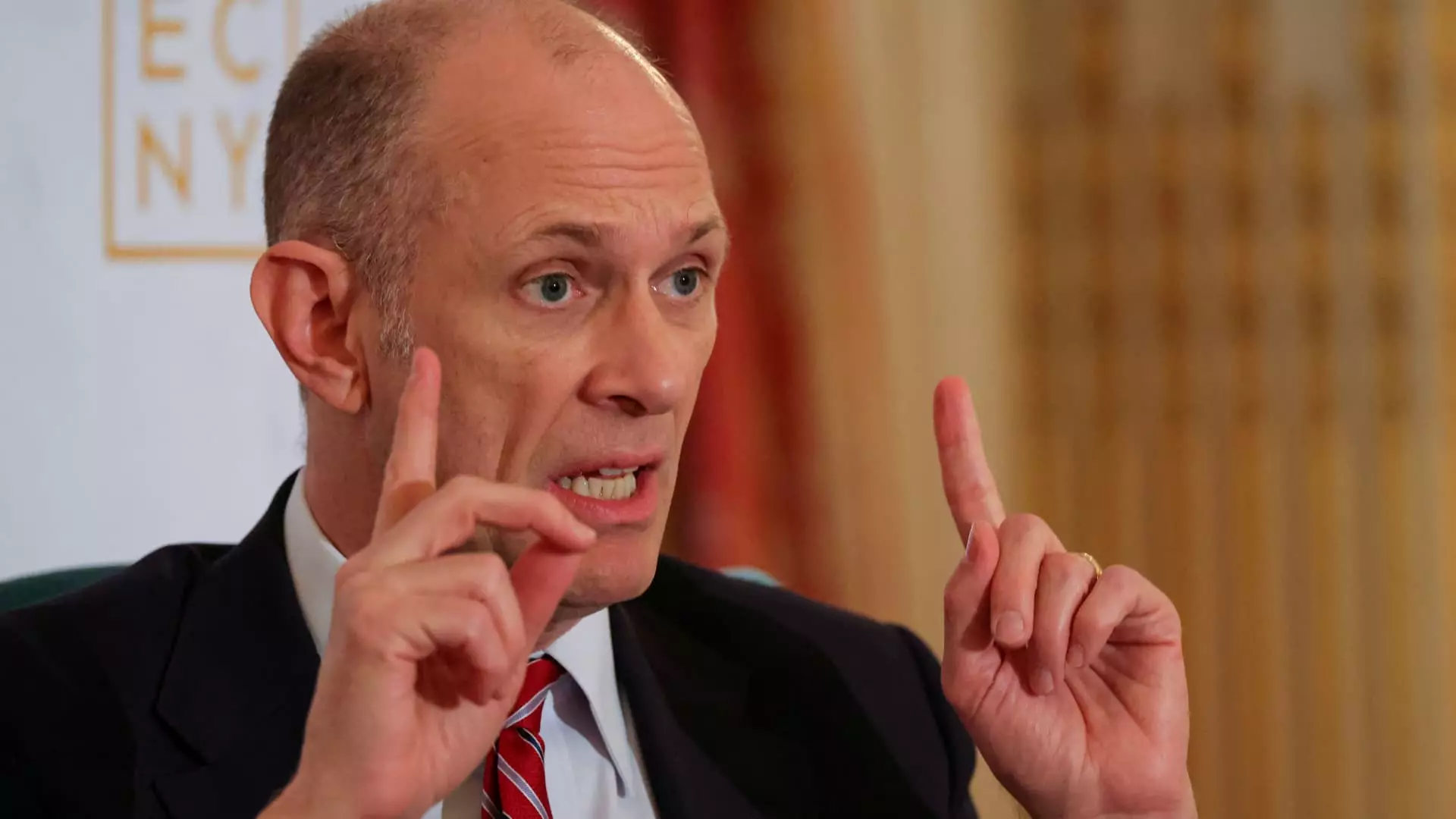In the unpredictable arena of international trade, President Donald Trump’s recent threats to impose hefty tariffs on goods from the European Union and Apple products have sent shockwaves through financial markets and the broader economy. Austan Goolsbee, President of the Chicago Federal Reserve, shed light on the precariousness of the situation in a recent CNBC interview, suggesting that these escalating trade tensions may very well delay necessary changes to interest rates. This precarious balancing act reveals not only the challenges faced by policymakers but also the fragility of our economic landscape, which has become ensnared in the whims of political maneuvering.
Goolsbee’s caution reflects a growing concern among economists and policymakers: that tariffs could induce a “stagflationary” environment, characterized by stagnating economic growth combined with high inflation—an ideal scenario that is anything but ideal. The trade landscape is not merely a backdrop for economic policy but has become a central character, wielding the potential to reshape the financial narrative in real-time. By invoking tariffs as a political weapon, the Trump administration exacerbates uncertainty, forcing the Federal Reserve into a corner as it grapples with the potential fallout.
Inflation’s Unwelcome Return
The specter of inflation looms large, and markets appear skittish in its presence. Goolsbee lamented the public’s aversion to inflation, and rightly so; historically, inflation has eroded purchasing power, creating a rift between wage growth and the cost of living that can catapult dissatisfaction among citizens. Consumers are becoming increasingly reacquainted with this unwelcome visitor amid rising prices, driven in part by the looming threat of tariffs on everyday goods.
Take, for example, the proposed 50% tariff on EU products scheduled for June 1 and the additional 25% tariff on Apple’s iPhones not manufactured in the U.S. While the average consumer might perceive these tariffs as mere numbers on a political spreadsheet, the reality is that they directly impact wallets. With Apple’s production largely based in China and some operations in India, the cost of a new iPhone could rise significantly, forcing consumers to make hard decisions on expendable income.
Goolsbee’s insight that the Fed must now more rigorously evaluate these shifting policies speaks volumes about the tense relationship between monetary policy and fiscal decisions. His comments suggest that while he remains hopeful for economic stability, the intertwining net of tariffs may choke out that optimism, leading us into murky economic waters.
The Dilemma of Decision-Making
The Federal Reserve, traditionally a bastion of relative insulation from political affairs, now finds itself grappling with an array of external shocks that complicate its mandate to ensure economic stability. Goolsbee stated that the Federal Open Market Committee (FOMC) will soon meet to reassess interest rates, yet there remains a palpable sense of hesitance. “I don’t like even mildly tying our hands at the next meeting, much less over six, eight, or ten meetings from now,” he explained, a stark reflection of the uncertainty that could inhibit decisive action.
It’s a precarious dance between the Fed’s growing responsibilities and the overarching influence of political decisions that seem to shift daily. Goolsbee’s mention of stable full employment and a hopeful trajectory toward inflation around 2% underscores the tightrope the central bank must walk. It is painfully clear that economic health and political risk are inextricably linked, forcing the Fed to reconsider its approach and possibly recalibrate its policies in light of this evolving trade landscape.
The task of navigating the complexities of the U.S. economy against the backdrop of tariff-induced volatility is not merely about adjusting interest rates; it’s about managing expectations, fostering confidence, and providing a sense of stability. And yet, each new threat of tariffs serves to destabilize, erode consumer confidence, and cast a shadow over potential economic growth. It’s a challenging moment in history, one that calls for exceptional wisdom from our financial leaders, who must look beyond the immediate ramifications and formulate strategies that encompass an increasingly turbulent future.

Leave a Reply